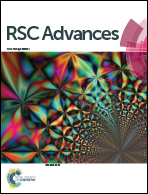Towards circular fashion – transforming pulp mills into hubs for textile recycling†
Abstract
Most waste textiles are currently incinerated or landfilled, which is becoming an increasing environmental problem due to the ever-increasing consumption of textiles in the world. New recycling processes are required to address this problem and, although textile-to-textile recycling would be preferable, many researchers have suggested implementing processes based on the depolymerization of the textile fibers. We suggest integrating textile recycling with pulp mills, which would reduce the cost of depolymerizing the textile fibers and, at the same time, would diversify the product portfolio of the pulp mill, transforming the facility into a true biorefinery. This integration would be based on using green liquor as the pretreatment agent in the textile recycling process, as well as energy integration between the two processes. Na2CO3 was used to identify the conditions under which this pretreatment should be performed. Temperature and residence time proved to be critical in the efficacy of the pretreatment, as suitable values were required to ensure partial solubilization of the waste textiles. The conditioning of the pretreated material also had an important effect on the process, as it ensured a suitable environment for the enzymatic depolymerization while maintaining the changes in the material caused by pretreatment. Pretreatment was then performed with industrial green liquor, showing that the efficiency of textile recycling was about 70% when integrated in a pulp mill.

- This article is part of the themed collections: Sustainable fashion and Renewable materials and recycling


 Please wait while we load your content...
Please wait while we load your content...